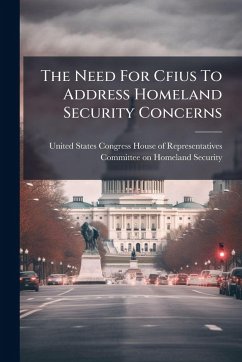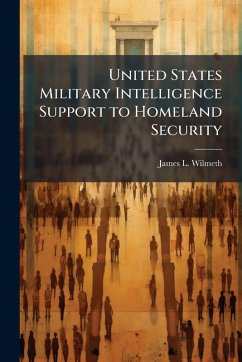
The Relationship Between Homeland Defense and Homeland Security

PAYBACK Punkte
8 °P sammeln!
Since September 11, 2001, America has conducted sweeping executive branch changes and funneled vast economic and military resources toward lessening the opportunity for terrorists to strike within the borders of the United States. Two new bulwarks were added to the ramparts for securing and defending our nation, they were the Department of Homeland Security (DHS) and U.S. Northern Command of the Department of Defense (DoD). With these additions, the spectrum between security and defense needs a new lens through which to focus the individual actions of each of these new Federal entities. The De...
Since September 11, 2001, America has conducted sweeping executive branch changes and funneled vast economic and military resources toward lessening the opportunity for terrorists to strike within the borders of the United States. Two new bulwarks were added to the ramparts for securing and defending our nation, they were the Department of Homeland Security (DHS) and U.S. Northern Command of the Department of Defense (DoD). With these additions, the spectrum between security and defense needs a new lens through which to focus the individual actions of each of these new Federal entities. The Departments of Homeland Security and Defense have the opportunity, the responsibility, and the challenge to confront the vulnerabilities and strengths that will assure the protection, prosperity, sovereignty, and freedom for which America stands. While there is no perfect national defense prescription, six modest proposals are presented for improving homeland defense and homeland security. The relationship between homeland defense and security requires some detailed understanding of each component. The author explains the conceptual background of each component, along with the functional Federal entities of DHS and DoD. The author also examines some of the legal limitations designed to insure civil control over military activities. These limitations are imposed upon the military when conducting operations within the U.S. By reviewing current threat analysis techniques used by the DoD, and examining three historical examples of foreign national struggles with terrorism and insurgency, the author proposes six ideas to enhance the DHS and the DoD relationship. This work has been selected by scholars as being culturally important, and is part of the knowledge base of civilization as we know it. This work was reproduced from the original artifact, and remains as true to the original work as possible. Therefore, you will see the original copyright references, library stamps (as most of these works have been housed in our most important libraries around the world), and other notations in the work. This work is in the public domain in the United States of America, and possibly other nations. Within the United States, you may freely copy and distribute this work, as no entity (individual or corporate) has a copyright on the body of the work. As a reproduction of a historical artifact, this work may contain missing or blurred pages, poor pictures, errant marks, etc. Scholars believe, and we concur, that this work is important enough to be preserved, reproduced, and made generally available to the public. We appreciate your support of the preservation process, and thank you for being an important part of keeping this knowledge alive and relevant.












